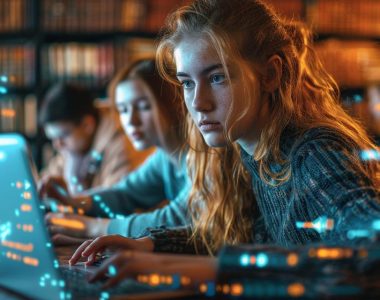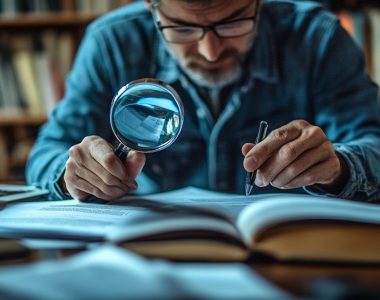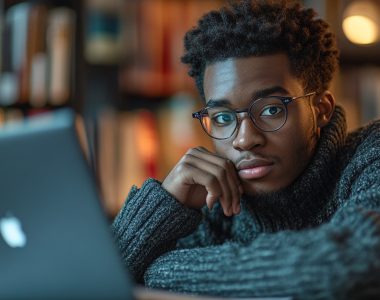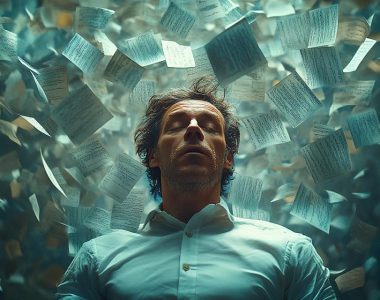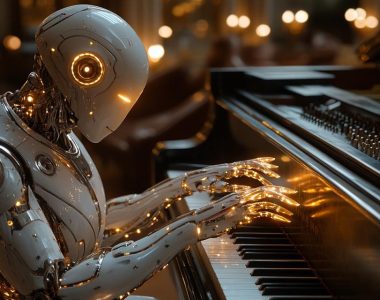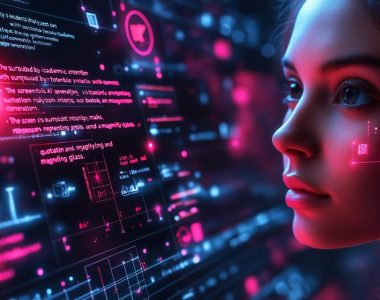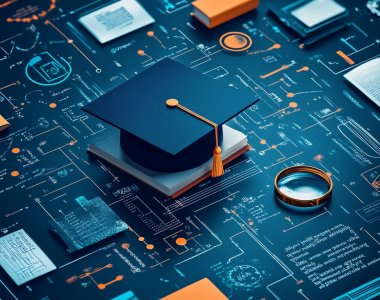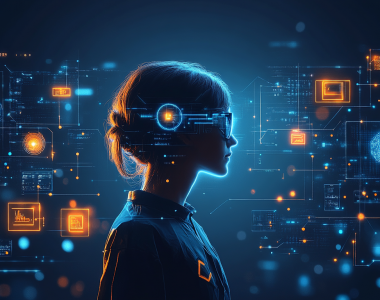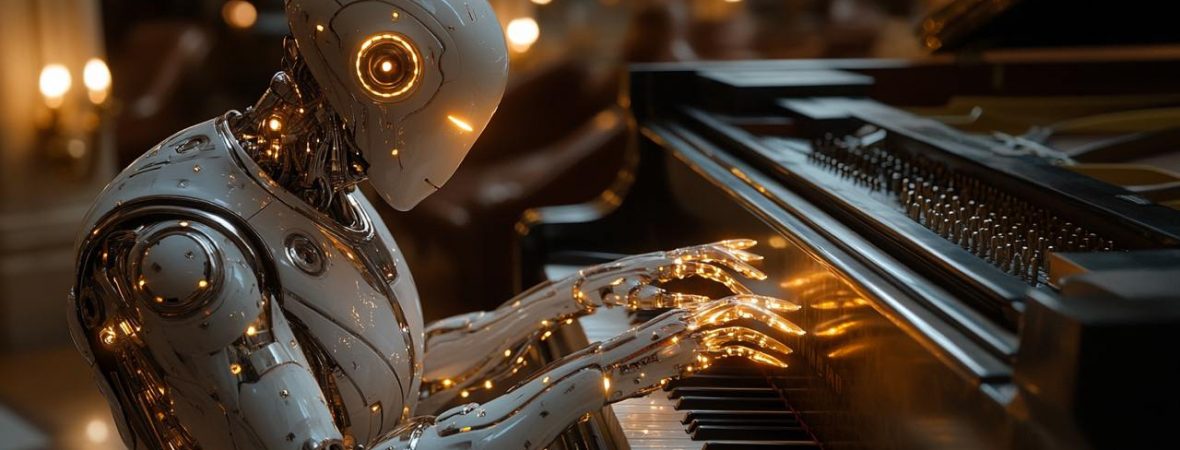
Creativity has long been considered a uniquely human trait. These days, however, a new ally has emerged. Artificial intelligence has replaced humans in many areas. AI is rapidly penetrating areas that were once considered the domain of solely human ingenuity. In recent years, tools such as generative adversarial networks (GANs) and AI-powered design platforms have allowed machines to compose music, write poetry, and even create architectural designs. Often, these programs produce results that force us to rethink our notions of originality and authorship.
This technological evolution is beginning to raise questions about the future of creativity itself. Some experts cite AI as a tool that lowers barriers to artistic expression. However, others fear that it could impoverish the authenticity of human-created art. More and more industries are beginning to embrace the use of artificial intelligence, which is intensifying the debate. People wonder if AI can replace human creativity.
Defining Creativity: Human vs. AI
Specialists from different fields defined creativity in different ways. Psychologists like J.P. Guilford distinguish the term as the ability to generate unexpected ideas. They emphasize that true creativity requires originality and value, i.e., solving a problem or evoking emotion. Philosophers define the term as a deeply human act of meaning-making. Meanwhile, neuroscience defines the term as a dynamic interaction of brain networks. According to their approach, creativity is manifested when the default mode network interacts with the executive control network. They are shaped by emotions, memories, and cultural context.
At its core, human creativity is inseparable from embodied experience: the joys, traumas and ambiguities of life. They nourish art, music and innovation with authenticity. It is driven by curiosity, intuition and the desire to connect, question or transcend.
If we consider artificial intelligence and creativity, AI approaches creativity through a fundamentally different lens. AI is characterized by computation and lack of consciousness. Modern AI systems like GPT-4, DALL-E, or music-generating algorithms rely on three pillars:
- Pattern recognition. AI analyzes vast datasets (millions of paintings, songs, or texts) to identify statistical patterns.
- Data-driven generation. Tools like GANs or transformers produce new content by recombining learned patterns.
- Deep learning. Some AI systems use reinforcement learning to prioritize “surprising” outputs. Still, this model is measured against training data, not lived experience.
The main point of difference between artificial intelligence and human creativity is that while artificial intelligence can mimic creative outputs, such as writing a sonnet, designing a logo, or composing a melody, it acts without intention, emotion, or awareness. Its “creativity” is a mathematical mixture of probabilities. But human creativity involves emotion, intuition, and life experience.
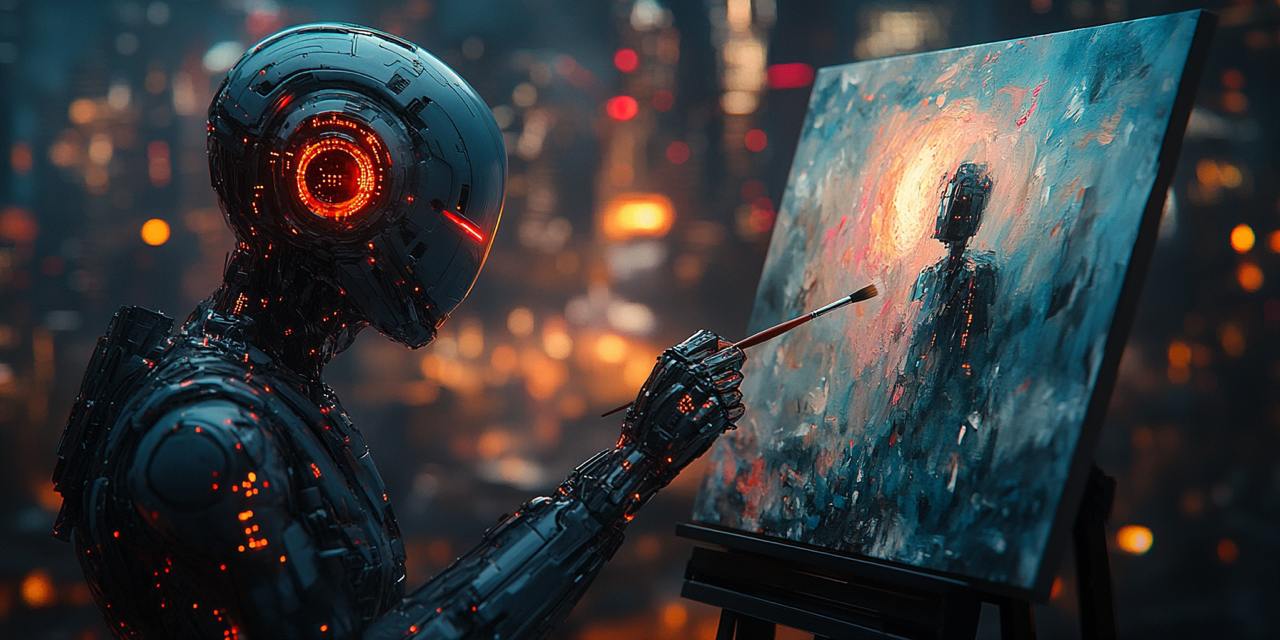
How AI Enhances Human Creativity?
AI is an effective tool not to replace humans, but to enhance their thinking capabilities. Here are great examples of algorithms and humans working together in creative industries:
- AI-assisted writing (ChatGPT, Jasper). Stephen Marche wrote Death of an Author, using artificial intelligence to blend literary styles, sparking debate about the use of artificial intelligence in storytelling. Marketing teams use Jasper to generate ad copy variants, A/B test messaging, and localize content for global audiences.
- AI-generated art (DALL·E, Midjourney). Graphic designers are using artificial intelligence to brainstorm logos, packaging or brand imagery. For example, Nutella used artificial intelligence to create millions of unique can designs, each algorithmically customized to fit regional aesthetics. Filmmaker Paul Trillo used Midjourney to storyboard scenes for The Frost, speeding up pre-production while maintaining artistic control.
- AI in music composition (AIVA, Amper Music). Composer Taryn Southern created I AM AI, the first album co-produced with AI, using Amper to experiment with genre-blending sounds. Video game studios deploy AIVA to generate adaptive soundtracks that respond to player actions in real-time.
Can AI replace human creativity? This probability is small, but not zero. These examples emphasize AI’s role as a catalyst, not a competitor. By outsourcing routine tasks and providing a fresh perspective, AI allows people to focus on what they do best—infusing work with emotion, intention, and cultural resonance.
Limitations of AI in Creativity
With artificial intelligence, there are more opportunities to create art, music, and texts. But its creative potential remains limited. Which means human ingenuity is still needed. What’s the downside of AI:
- Lack of true originality. Artificial intelligence responds to queries based on existing patterns and trends. Simply put, it does not create anything new; it merely processes existing information created by man.
- Absence of emotional depth and subjective experience. Generated content is based on mathematical probabilities; no emotions or human feelings are included.
- Ethical concerns. AI-generated content is based on other works, which can lead to the debate over authorship and authenticity.
- Bias and data dependency. AI is limited by the datasets it is trained on.
Can AI Replace Human Creativity?
The question of whether AI can replace creativity generated by humans is not a binary one. It hinges on how we define “creativity” itself. Proponents of AI’s disruptive potential argue that machines are already reshaping industries, while skeptics insist that human creativity remains irreplaceable. Below, we dissect both sides of this contentious debate.
AI’s ability to generate content at scale, automate creative tasks, and mimic artistic styles come as the main arguments for replacement. These points prove the fact that AI is capable of creating high-quality content without human enrollment.
However, the main arguments against replacement include that creativity is deeply human and tied to emotions, consciousness, and culture. Soulless algorithms cannot create quality content since they cannot feel the specifics of the required work.
AI Text Detection with Advacheck
In the growing landscape of AI-generated content, distinguishing between human and AI-created text is crucial. Advacheck offers an AI text detector that accurately identifies AI-generated content, helping maintain authenticity and originality in creative works. Whether you’re an artist, writer, or content creator, using Advacheck can ensure the integrity of your content. The software has the following benefits:
- Ensures the authenticity and originality of your materials.
- Is ideal for copywriters, marketers, students, science workers, and content creators.
- Give confidence in the integrity of your content.
If we look at the future and try to predict upcoming trends and changes in the relationship between AI and human creativity, it’s most likely that AI will co-create with humans. The probability of complete human replacement by artificial intelligence is low. Artists, writers, and designers will implement AI tools into their routine workflows and adapt algorithms to simplify and speed up content creation.
If we consider the creativity of artificial intelligence, there is no doubt that AI is a powerful tool for content creation. However, it cannot fully replicate the creative potential of humans. AI is an effective human assistant that can simplify the process of creating new content. The interaction between humans and artificial intelligence is expected to evolve in the creative space, leading to new combinations.

